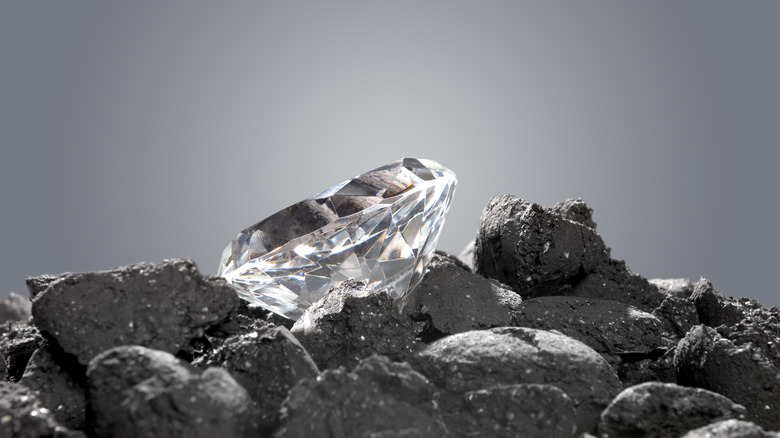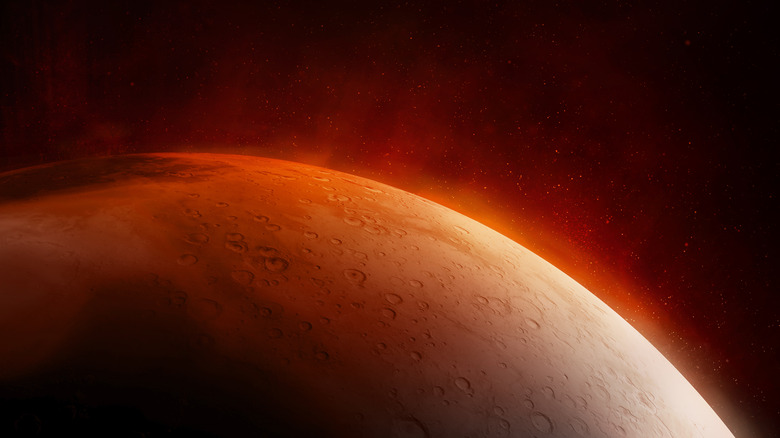Here's What We Really Know About The So-Called 'Diamond Planet'
The promise of unimaginable wealth has often been a driving force for exploration in human history, even when evidence for its existence is questionable at best. The search for El Dorado is a prime example of this, as conquistadors spent years on futile quests for the rumored new world city made entirely of gold (per the BBC, it turns out the name "El Dorado" likely referred to the leader of the Muisca people who ritually covered himself in gold dust, rather than a golden city). Even the present-day search for worlds beyond our own can have similar motivations.
Saturn's moon Titan, for instance, is believed to be covered in oceans of liquid methane, a fantastical dream for the heads of energy companies back on Earth. A prospect that stirs the imagination a bit more, however, is that of a planet covered in diamonds. According to initial theories, 55 Cancri e is a planet 40-million light-years away that has an entire layer composed of solid diamond among other materials. Yet like El Dorado, further research could prove this to be wishful thinking (via Space.com).
The 'Diamond planet' may just be another rocky world
The research that led astronomers to contemplate the existence of a 'diamond world' was largely based on observations of its star, 55 Cancri. Since scientists theorize that there is correlation between the chemical compositions of stars and their planets, it was believed that the 55 Cancri's supposedly high carbon levels applied to the innermost planet of the system as well. Combined with the large planet's high gravity and proximity to its star, such carbon levels could have produced a layer of diamond beneath the planet's molten surface (via NASA).
While diamonds are of debated value on Earth, the idea that the cosmos produced such a massive amount on one planet has earned a lot of media attention. Unfortunately, new data indicates that the star is not exceptionally carbon-rich. It is still possible that 55 Cancri e could boast such a composition, as the correlation between stars and planets is based largely on our own solar system. The truth is uncertain at this point and any number of things might be true about the planet's surface (via Sky & Telescope). If the correlation is applicable though, then astronomers will likely have to look elsewhere for planet-spanning gemstones (via Astronomy.com).

